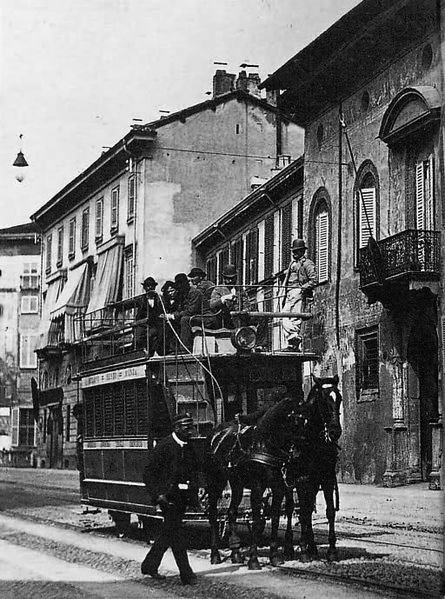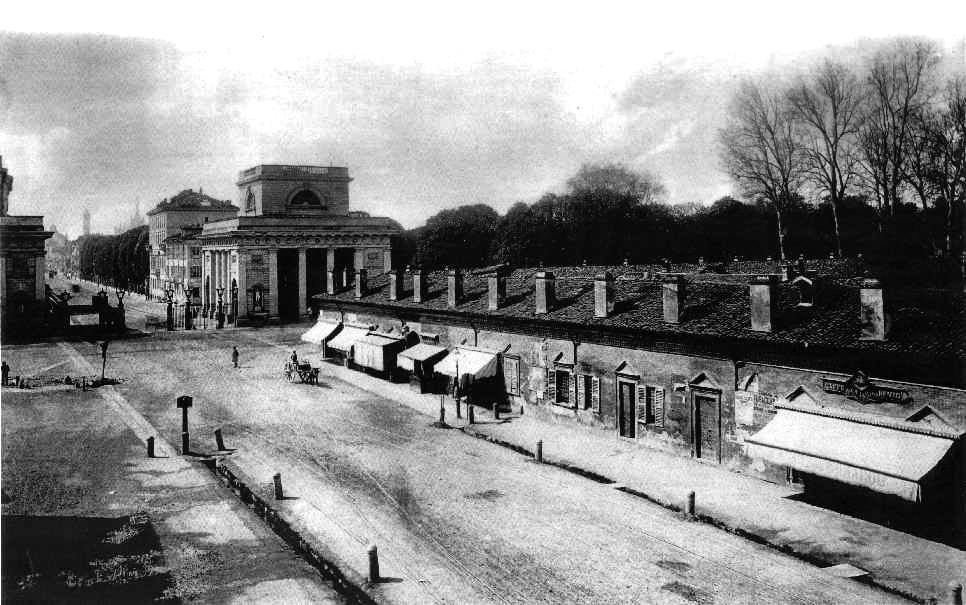A showplace of the Habsburg administration which built the first Public Gardens of the city here, designed by Piermarini (1783) and later expanded by Balzaretto (1855), the area of Porta Venezia (previously Porta Orientale) in the early 1900s became the neighborhood of the Milanese upper middle class. Many of the gardens that adorned the noble 18th-century palaces of Corso Venezia, including Villa Reale Belgiojoso (now the home of the Galleria d’Arte Moderna), were occupied by new constructions or sacrificed to make new streets (Via Mozart, Via Serbelloni and Via Barozzi). In the garden of Palazzo Sola-Brusca (previously Serbelloni), by the neoclassical architect Simone Cantoni, from 1926 to 1930 elegant residential buildings were erected, designed by Aldo Andreani in a late-eclectic language whose most outstanding expression came in the design of Palazzo Fidia (between Via Melegari 12 and Via Mozart 11).
A similar real estate operation had already been implemented in the second half of the 1800s in the area of the Lazzaretto, built in 1488 beyond the walls of the city along what was known as Corso Loreto (today’s Corso Buenos Aires) and demolished to create a district of very high density, in this case for lower middle class housing. The large, varied population of the zone at the start of the century brought all the desires and demands of modernity into a rapidly growing Milan. Different spaces for leisure time and entertainment were created, including the famous Kursaal Diana (on Viale Piave), the hotel-symbol of the Milanese belle époque built at the site of the old Bagno di Diana (the swimming pool designed by the architect Pizzala in 1842), and the Albergo Diurno Metropolitano Venezia (below the present Piazza Oberdan), whose interior design is attributed to Piero Portaluppi. Portaluppi, the architect preferred by the Milanese industrial bourgeoisie in the 1930s, designed many interesting works in this zone: from Villa Necchi-Campiglio (Via Mozart 14) to Casa Boschi-Di Stefano (Via Jan 15), the building of the Società Buonarroti-Carpaccio-Giotto (with its impressive arch on Corso Venezia) and the Hoepli Civic Planetarium, opened in 1930 at the Public Gardens, with Benito Mussolini in attendance.
The most important works of architecture in this area in the period in which it was the home of Vico Magistretti and the Boschi-Di Stefano and Necchi-Campiglio families included:
Edificio Società Buonarroti-Carpaccio-Giotto (1926 – 1930)
Corso Venezia, 62-64
Design: Piero Portaluppi
Palazzo Fidia (1926 – 1930)
Via Melegari, 2
Design: Aldo Andreani
Rasini house and tower (1933 – 1934)
Bastioni di Porta Venezia, 1 – Corso Venezia, 61
Design: Emilio Lancia, Giò Ponti
Padiglione d’arte contemporanea della civica galleria d’arte moderna (1948 – 1954)
Via Palestro, 14
Design: Ignazio Gardell

